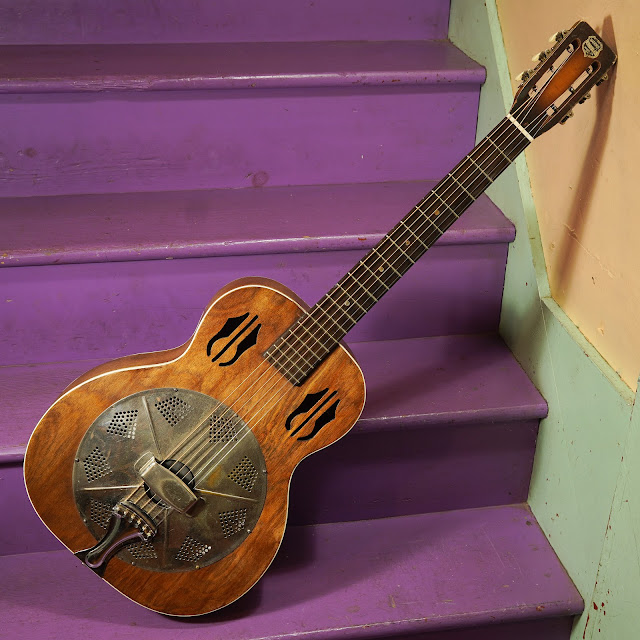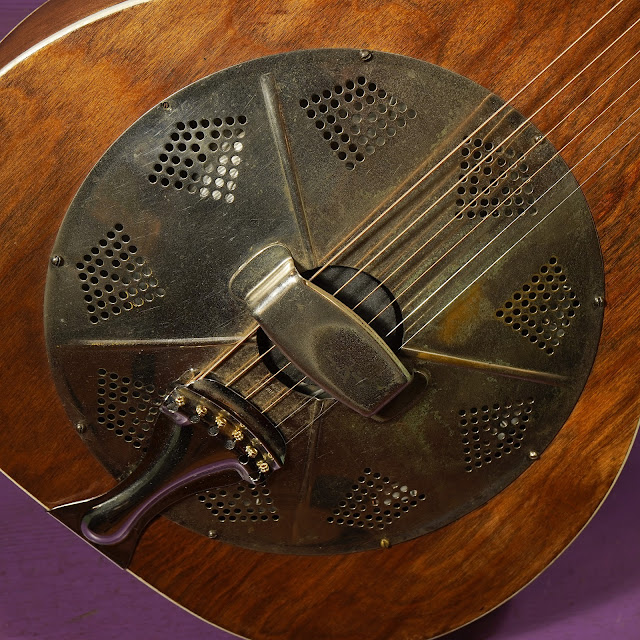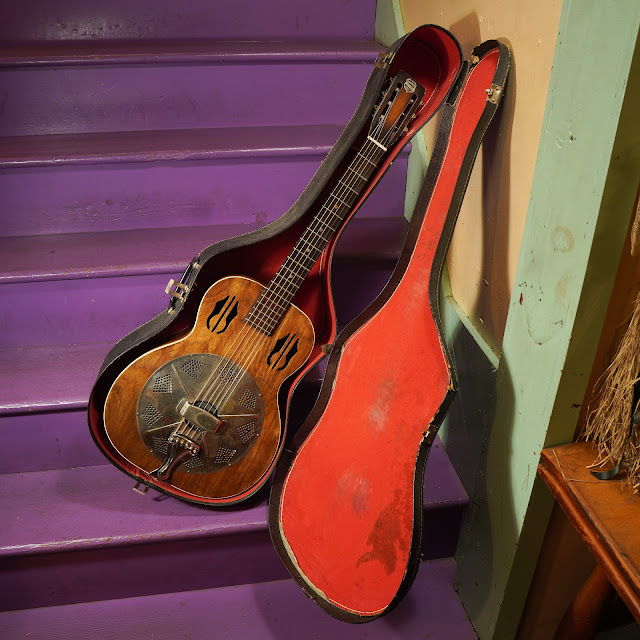1936 National Rosita Woodbody Resonator Guitar
The last time I saw this guitar was 7 years ago. I haven't seen another Rosita in-shop since and it's no surprise because they're pretty rare. This one was a hard-luck case (what woodbody National isn't, though?) and while it looks tasty now, it's had a lot done to it over the years, though "the bones are good."
Before I touched it at all, the neck had been reset by a fella up in Burlington. At some point in its misty past the finish was stripped on the body and back of the neck and it was stained and refinished to a satin-ish medium brown. The headstock was left as-is, though, for which I'm eternally grateful. The binding was replaced at some point, too, because whatever stripper had been used toasted the old celluloid. The positive bit about all this, though, is that the work was done some time ago and so it sort-of looks "naturally old" at a glance.
The last time I saw this all I had to do was "glorified setup" work -- a fret level/dress, cone seating, and install of a massive bone saddle to get the action raised and the intonation worked-out. The original cone is extant but I needed to crimp its edges up and "massage" it a lot to get it to retain its shape and stay stable in service. Someone had manhandled it a bit in the past but considering that it hasn't moved, it still sounds great, and the action has remained the same for most of the last decade, I think that "massage" job is doing just fine.
This time around I double-checked the frets, opened it up to clean-out dust and debris, added more compensation to the saddle and made the string break-points smaller, seated the biscuit more firmly on the top of the cone, and used a bit of aluminum tape to "tuck" the cone's edges so it can't rotate or move around if the player decides to remove all of the strings at once. I think this very important as there are a ton of resonator instruments that play and/or sound like garbage because a cone has rotated without the owner's knowledge.
It plays fast and easy and sounds tremendous. I'm pretty sure that Regal made the bodies and necks for these models for National/Dobro as the "squashed 000" shape is very similar to Regal Junior Jumbo flattops and other Regal-made, Dobro-branded resonators I've played and fixed from the same time. I wouldn't go heavier on the strings, though, than the 52w-11 set I have installed on it -- for standard tuning. Regular lights would be fine for open G or lower pitch (where the tension is reduced by a lower tuning) but 11s are a safer bet both for the neck and the old cone on many of these woodbody Nationals when tuned E-to-E standard.
Repairs included: a glorified setup. Previously I'd done a level/dress of the frets, added side dots, and fit a new saddle to the cone as well as some cone "massaging."
Body: ply birch
Cone type: single cone
Bridge: maple biscuit with bone saddle
Fretboard: ebonized maple
Neck wood: poplar
Action height at 12th fret: 3/32” bass 1/16” treble (fast, spot-on)
String gauges: 52w-11
Neck shape: medium-bigger V
Board radius: flat
Neck relief: straight
Fret style: lower/smaller
Scale length: 25"
Nut width: 1 3/4"
Body width: 14 1/8"
Body depth: 3 1/2"
Weight: 5 lbs 2 oz
Condition notes: the body and back of the neck are refinished and rebound... some time ago. There's plenty of handling-wear and playwear by copious amounts of light scratching and small dings here and there throughout. In the pics the coverplate is missing a screw but in reality I've installed it so it's good to go. I have the tailpiece strung "under" rather than "over" to increase back-angle on the saddle and thus drive the cone a bit more. This also -- happily -- pulls the tailpiece off of the coverplate so it has less of a chance to rattle around while playing. It can be strung either way, though, and was "over the top as normal" for a long time and working just fine. There's a little bit of a raised grain/tight hairline chip-out on the back of the headstock "below the nut."
It comes with: a funky old chip case.





















Comments